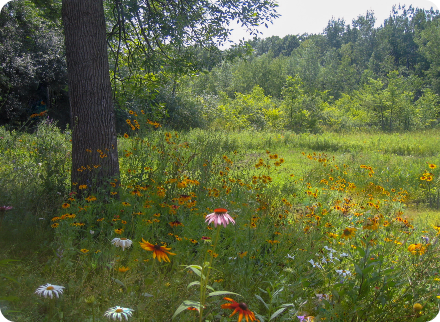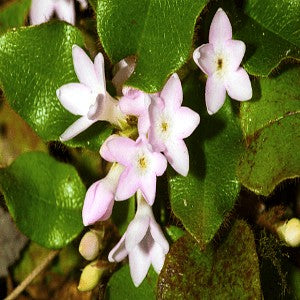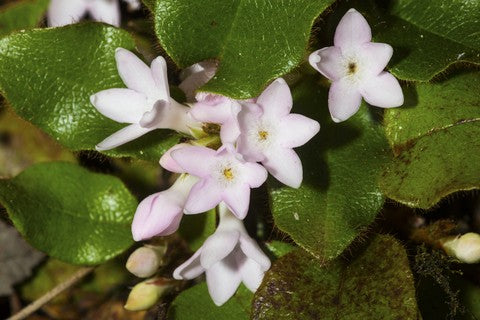- Out of Stock
1
/
of
2
Trailing Arbutus Seeds (Mayflower)
Trailing Arbutus Seeds (Mayflower)
 Sorry!
This Item is not Available
Sorry!
This Item is not Available
Price:
$9.95
Price:
Sale price
$9.95
Unit price
/
per
Couldn't load pickup availability


Don't Forget: Free Shipping on All Orders of $39 or More!
TRAILING ARBUTUS - Epigaea repens Seed per Packet 30+) Trailing Arbutus commonly known as Mayflower forms a creeping mat, commonly only 4-6 in. high. Leathery green leaves that are aromatic and evergreen. It forms trumpet-shaped, white to pale pink flowers that are deliciously and highly fragrant. The flowers are followed by a whitish berry, resembling a raspberry in appearance. They should be planted in part shade to shade in well-drained, humus rich acidic soils. Blooms Mar-May. Note: Difficult to get going and does not tolerate disturbances, but once it does establish it is so worth the wait. Shipping: Usually ships in 2 business days For a guaranteed delivery date, Please contact customer service
Woodland & Rare Wildflower Seeds Trailing Arbutus - Germ Code G4 About: Many seeds of woodland and rare wildflowers have built-in dormancy mechanisms which protect them from germinating before killing frosts or in times of drought. In the wild,seeds will lie dormant until they acclimate to their new environment or until the proper conditions for growth occur. To be successful with these types of species and growing them from seed you must realize that each species has a different method of naturally breaking dormancy. Woodland and Rare wildflowers are not instant garden flowers,and many take a great amount of patience before they germinate and bloom. Once they do,they are well worth the wait Until you are able to plant,seeds should be stored in a cool,dry place or in a sealed,airtight contain in the refrigerator (not the freezer). Suggestion for Breaking Dormancy for Woodland,Native and Rare Species Each species is different. Some are relatively quick and act like traditional perennials while others can take a few years. Below,we have outlined different ways these species break dormancy to help you better understand why some take longer than others. It will also help you to better understand why they do not germinate the first or second year so don't give up on them! Your Packets Will Be Marked with the Following Germination Codes on the Label: G1 Some species germinate upon sowing in a warm location like any other perennial. They grow and leaf the first year to begin blooming the second and successive years. G2 Some species need a cold,moist stratification followed by an extended cold period ie. Fall/Winter,before germination occurs. These species can be planted in warm but do need the cold/moist before germinating. G3 Very small seeds need light to break dormancy so they should be planted no deeper than 1/8th of an inch and just a light layer of soil cover. They should not be allowed to dry out. You can tell the size of your seeds by just looking at them. Some will need to go through the stratification process before germinating. G4 Some species will need a warm,moist period followed by a cold,moist period,warm,moist etc. Some will germinate after the first warm,cold,warm period while others will need 2-4 full years of these alternating conditions to break dormancy. Plant fresh seed immediately or keep cool/moist until you can. Planting Information: Seeds needing scarification,nicking or any specialized treatments have been done before shipping to you. Select a planting location with partial shade or shade or filtered light. Prepare the planting bed so that the soil is well draining and rich. The best way to do this is to till the top 12 inches of soil with a garden rake and then mix in several inches of humus,such as compost or peat moss unless you are planting in woodland area and then the soil is usually sufficient. Plant the seed no deeper than 1/4 inch below the surface of the soil unless you have small seeds which should be planted no deeper than 1/8 inch or on top of the soil,lightly compressed. Cover with a light layer of soil. Most seeds need to be protected from drying winds and sunlight,so cover them quickly. Water well if planting in spring,water lightly if planting in fall. Fern Spores: Direct sow fern spores on soil surface and pat them down for a good spore to soil contact. Any Question Contact Us at support@vermontwildflowerfarm.com

CUSTOM MIXES
We offer CUSTOM Seed Mixes for All Your Projects!
Best Pricing & Advice for Commercial projects
We've got you COVERED for Landscape
Management, Conservation & More!






